New article
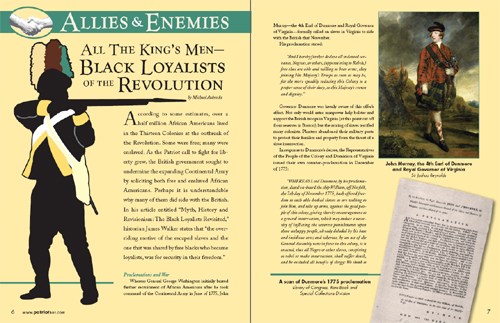
My friends at Patriots of the American Revolution sent me a sneak peek at my next feature on Black Loyalists. This article will be running in the Jan/Feb 2011 issue. This is my fourth feature for PAR and I have several new ones planned for the coming year. What better reason do you need to get a subscription to THE leading publication on the War for Independence? Visit PAR’s website for more information.
First RI Monument Update
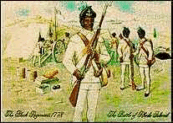 I wanted to post a quick update on our friend and guest blogger Michael Kahn. Michael is the historian working tirelessly to have a monument erected commemorating the soldiers and officers of the First Rhode Island Regiment. Last week Michael received a generous donation from IBM and a bronze Good Citizenship Medal from his local chapter of the Sons of the American Revolution. Michael told me that the SAR also gave the award to another board trustee, Monica Doherity, for her contributions to this project. Monica is also the editor of the book “The Nasty Affair at Pines Bridge,” which is only available through the Yorktown Historical Society. Read Michael's Guest Post
I wanted to post a quick update on our friend and guest blogger Michael Kahn. Michael is the historian working tirelessly to have a monument erected commemorating the soldiers and officers of the First Rhode Island Regiment. Last week Michael received a generous donation from IBM and a bronze Good Citizenship Medal from his local chapter of the Sons of the American Revolution. Michael told me that the SAR also gave the award to another board trustee, Monica Doherity, for her contributions to this project. Monica is also the editor of the book “The Nasty Affair at Pines Bridge,” which is only available through the Yorktown Historical Society. Read Michael's Guest Post
In an email to me Michael added, “We just finished a working site plan that would give us an idea how many paving stones we would need to assist us with fund raising--specifically, personalized paving stones. Our town planner, John Tegeder, completed this task to assist us with obtaining the necessary permits to place the monument on New York City Dept. of Environmental Protection property. I have already enlisted the help of two groups of public school students that would assist in the maintenance of the monument/property as part of their community service requirements.”
This is a perfect example of how ordinary people can work together to preserve our extraordinary heritage for future generations. Most of our most notable monuments came from grass roots movements like this. I will keep you updated on this worthy endeavor as it progresses. Well done Michael!
Jefferson and Religion
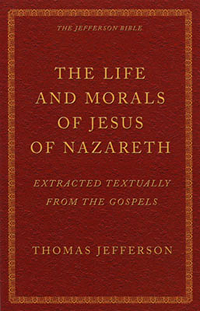 Yesterday I received an email from a reader who wanted to know my thoughts on Thomas Jefferson’s religious beliefs. This topic has been a subject of interest to me and I have spent a great deal of time examining his writings on faith and religion. My next manuscript is titled Faith and Freedom in Fredericksburg: Thomas Jefferson and the Virginia Statute of Religious Freedom and will present Thomas Jefferson’s time at Fredericksburg in 1777, his meeting at Weedon’s Tavern in which he agreed to author the Virginia Statute of Religious Freedom, the story surrounding the writing of it, why Jefferson took so much pride in its completion, and how the results are commemorated to this day. Synopsis here. This will be my most challenging project to date and I have already begun to gather some excellent sources. I have also published several essays on TJ and religion over at The Jefferson Project and the Jefferson Today Blog and that is where this individual found me.
Yesterday I received an email from a reader who wanted to know my thoughts on Thomas Jefferson’s religious beliefs. This topic has been a subject of interest to me and I have spent a great deal of time examining his writings on faith and religion. My next manuscript is titled Faith and Freedom in Fredericksburg: Thomas Jefferson and the Virginia Statute of Religious Freedom and will present Thomas Jefferson’s time at Fredericksburg in 1777, his meeting at Weedon’s Tavern in which he agreed to author the Virginia Statute of Religious Freedom, the story surrounding the writing of it, why Jefferson took so much pride in its completion, and how the results are commemorated to this day. Synopsis here. This will be my most challenging project to date and I have already begun to gather some excellent sources. I have also published several essays on TJ and religion over at The Jefferson Project and the Jefferson Today Blog and that is where this individual found me.It’s a great question as the controversial subject of Thomas Jefferson’s own faith has been one of great debate and dissension. Unfortunately, it has also been hijacked, skewed, and manipulated to support a variety of political and social agendas. Folks on the Right claim that Jefferson was the fervent champion of Christian conservatism while folks on the Left claim that he hated organized religion. (The irony is that the conservatives overlook the fact that Jefferson and his peers were perhaps the biggest liberals in this nation’s history.)
Today, 184 years after his death, Jefferson still dominates the political spectrum as both Republicans and Democrats have molded him into their own image of American virtue and progressive enterprise. Over the last two years, the new Tea Party Movement has added their spin, morphing this Founder into some rebellious, anti-government icon. The truth of the matter is that ALL of these people are wrong if they think Jefferson was solely any of these things. It is an understatement to say that he was a complex man full of contradiction and hypocrisy and most historians that I know agree that he would not fit in on the Right or Left. Perhaps that is why his memory is manipulated by so many.
It is far too easy to selectively grab words from a man who penned thousands of insights and twist them in support of an argument. For every Jefferson quote used by these groups to support their claims, there are a dozen more opposite quotes that counter it. For example, one side cites Jefferson as saying “I do not find in orthodox Christianity one redeeming feature” while the other uses “I am a real Christian – that is to say, a disciple of the doctrines of Jesus Christ.” Athiests proudly claim Jefferson as one of their own due to his comment “I am of a sect by myself as far as I know” while Protestants claim his membership with ““Of all the systems of morality, ancient or modern which have come under my observation, none appears to me so pure as that of Jesus.” Neither has exclusivity to the man.
It is enough to make your head spin, but that is a perfect example of the counter-complexity of an individual that has captivated our imagination for generations. The answer to this question is that I do not know exactly what Thomas Jefferson’s religious beliefs were. I’m not sure he even knew at times. All I can do is present what he said and accept the fact that he was not on the Right or Left, Christian or Atheist, Liberal or Conservative. He was ALL of these things in some regards and more.
This broad perspective goes for most of our Founding Fathers who practiced their own unorthodox faith during this unique period of enlightenment. By their very nature, they questioned everything and that was what made them both brilliant and dangerous. Religion was something that they had witnessed the perversion of and were determined to avoid in this new world of democracy. They knew that true religious freedom meant that all sects were equal in what would become the spiritual melting-pot of America. And they supported this notion regardless of their own personal beliefs.
This may upset some of my fellow Christians, but I do not believe that America was founded to be a Christian nation. I believe that it was founded on Christian principles, but specifically intended to be a refuge for all religious sects. This is what separates America from other countries who adhere to a single doctrine. Here, I as a Christian, practice my faith, while my Muslim neighbor practices his. It works and Jefferson would have approved. Additionally, I don’t believe that the Jefferson’s decree of the separation of church and state was intended to limit us in the pursuit of our spirituality. I think it was meant to do the opposite. This was the topic of an essay that I penned a few years back and may be the best answer that I can offer:
Jefferson's Religious Freedom by Michael Aubrecht
Originally written for The Jefferson Project [Nov. 4, 2008]
In today's age of divisive and unashamedly biased politics, it is very easy for our nation's citizens to become confused with regard to the principles upon which our country was founded. Both liberals and conservatives routinely lay claim to historical doctrines that they believe support, and in some cases mandate, their own political agendas. Perhaps no other government legislation is more misunderstood or contested than that which describes the "separation of church and state." Non-believers have traditionally argued that this declaration prohibits the recognition of any religion in the public arena, while believers from a variety of faiths argue that it does the exact opposite.
Most bothersome is the lack of knowledge that many people on both sides of the argument possess on the matter. The fact is that the U.S. Constitution, a completely secular document, contains no references to God, Jesus, or Christianity. It says absolutely nothing about the United States being officially founded as a Christian nation. On the other hand, the Declaration of Independence clearly refers to "the Creator" when it states, "We hold these truths to be self-evident, that all men are created equal, that they are endowed by their Creator with certain unalienable Rights, that among these are Life, Liberty and the pursuit of Happiness."
That is as close as we come to a formal ‘God' endorsement. The fact of the matter is, the literal phrases "church and state," or "separation of church and state" do not appear anywhere in our nation's founding documents. Unfortunately, far too many people today believe that it does.
This does not mean that the Framers were anti-religious. In fact, many of the Founding Fathers belonged to one of the following denominations: Episcopalian/Anglican, Presbyterian, Congregationalist, Quaker, Dutch/German Reformed, Lutheran, Catholic, Huguenot, Unitarian, Methodist, and Calvinist, although not all were actively practicing. Many would more likely be considered Deists more than traditional Christians, and some even believed that the practice of organized religion was a sin in itself. Other Founders practiced a more traditional bible-based lifestyle and considered the open practice of a chosen faith a "must" for the new country. Freedom from England meant freedom from the Church of England.
In order to fully understand what freedoms and limitations exist in America within the "separation of church and state," it is essential that one studies the intentions and beliefs of the principle's creator. The original source of this directive was the Virginia Act for Establishing Religious Freedom, which Thomas Jefferson first proposed in 1779. The General Assembly adopted it in 1786. This act was passed by both houses and has since become a part of the Virginia Constitution. The principles and language of this unique document have inspired supporters of religious freedom around the world to adopt similar principles. Read On
Me and My Civil War Memory
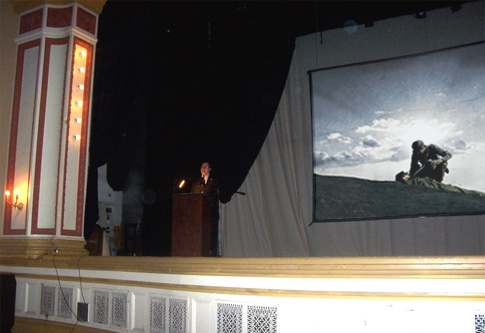
The Carnegie-Carnegie Music Hall screening could not have gone better. Thanks to all who came out. We packed the hall and raised over $1400 in ticket sales to benefit the Capt. Thomas Espy Post No. 153 (GAR). There is a professionally taped (30-minute) video of the entire program to come. In the meantime, here is an audio version of my address that was recorded from the audience. There is an event page for the Pittsburgh screening with a recap, photos, newspaper articles and full video posted over on the movie’s website. Read Here.
Below is a transcript of my speech which details how my own interpretations of Civil War Memory have evolved due to this film and trip home:
Thank you ladies and gentlemen. I want to begin tonight by recognizing Maggie Forbes, Diane Klinefelter, and all the folks here at the Carnegie-Carnegie for their wonderful support and hospitality. When we were looking at screening venues in Pittsburgh, they were at the top of our list. I also want to thank all of the media who helped to promote this event including our friends at the Post Gazette and the Green Tree Times. Marylynn Pitz in particular, wrote a wonderful article on us that ran today and we appreciate her attention very much.
Our entire cast and crew send their thanks as well. They are all celebrating the holiday with their families. Clint Ross, my partner at Right Stripe Media, as well as the director, co-writer, producer and visionary behind this entire project sends his regards too. He is back home putting the finishing touches on the DVD, which we plan to release next month for the Anniversary of this battle.
We have some handouts for you available in the reception area. All attendees who register tonight will be emailed a special code and receive a discount on the DVD upon its release. That is our way of showing appreciation for your support.
Without a doubt, the biggest thrill for me as a historian is the opportunities that I get to travel around and speak to audiences at museums and universities. Most of the time I am standing up on a stage staring out at a room full of strangers, yet tonight, I see a theater full of family, friends, and familiar faces. It truly feels like a homecoming and has made this night very special indeed.
For the past 16 years, I have been down in Fredericksburg, writing and speaking about the wartime experiences of Virginia’s civilians and soldiers. Four major battlefields sit within a 20 mile radius of the town and the entire region is saturated in both Colonial and Civil War history.
Richard Kirkland was an individual who captured my attention early on, and I have spent years sharing his story through books, tours, and now film. His legacy is that of a man who was ordinary - doing the extraordinary. Over the years, I have given many private tours down at the stone wall. I have walked visitors up and down the sunken road and told them of the courage and compassion of this simple infantry sergeant. I have talked about the 2nd South Carolina and Gen. Kershaw. I have presented the arrogance of Ambrose Burnside and the futility of the Union’s assault.
Yet at the same time, I never leapt the wall myself, to focus on the Federal troops perspective. I never really gave them the time necessary to understand their point of view. I thought of them more as victims than soldiers. Certainly I was aware of their sacrifice, but not at a personal level. This film forced me to re-examine the story of The Angel of Marye’s Heights, of which I had written and lectured about for years.
If I ever was considered an authority, I must confess that I was a one-sided authority in many ways and as I set-out to co-write a balanced script, I found myself metaphorically leaping that wall and gaining a newfound respect and admiration for the tenacity of those Union forces that fell at Fredericksburg. As a result, I have made a pledge to literally leap that wall on my next tour and spend some time on the Union lines. In preparation for tonight, I felt called to dig even deeper for ties to my hometown. There are many.
Fredericksburg is different when compared to most other Civil War Battlefields. Unlike Gettysburg or Antietam, it does not boast any high-command equestrian monuments. You will not find any sword wielding titans on this field. This is extremely unique as during the Battle of Fredericksburg, all of the South’s marquee-generals were standing at the top of Marye’s Heights. These are men who are still held in the highest of regards in the South.
Robert E. Lee and his most trusted Lt. Generals including Stonewall Jackson, James Longstreet and Jeb Stuart stood on that field. Yet when you visit the Fredericksburg Battlefield today, there is but one statue – the Kirkland Monument – depicting a lone infantry sergeant and a fallen foe. It is the common soldier that they chose to commemorate. The ones who spilled blood and endured the suffering of one of the most horrific engagements of the conflict. They are the memory that is forever frozen in time.
There is another monument of note at Fredericksburg. It stands atop Marye’s Heights and commands the center of the National Cemetery - the final resting place of 15,000 Federals who never made it home. This statue portrays General Andrew A. Humphreys and commemorates his Division of Pennsylvania Infantry, the Fifth Corps.
Humphrey’s men took place in the assault and made it to within 100 yards of the ridge before being cut to pieces and driven back. Theirs was the furthest advance on this portion of the Army of Northern Virginia’s lines. On the side of the general’s pedestal read the names of the units that participated in this doomed assault with unparalleled courage and conviction. Included on this list is the 123rd Volunteer Regiment who were mustered out of Allegheny County. Many of these men had ties to Pittsburgh either as residents or through family relations. Three veterans were members of the ESPY Post. One soldier who survived the Battle of Fredericksburg later recalled the carnage he witnessed.
He wrote: “On the following day the battle opened, and at three P. M., after the corps of Hancock and French had been checked and terribly slaughtered, Humphreys' Division was ordered in. It was a forlorn hope, but gallantly it went forward, and charged again and again those impregnable heights. What brave men dare do, they did; but it was all in vain. No human power could stand against the storm that swept that fatal ground. The One Hundred and Twenty-third occupied a position in the line, with its right reaching nearly to the pike, and bore manfully its part in the battle, suffering grievously. Lieutenant James R. Coulter was among the killed, and Captain Daniel Boisol and Lieutenant George Dilworth among the mortally wounded. The entire loss was twenty-one killed, and one hundred and thirty-one wounded. All night long it lay in position and through the weary hours of the following day, exposed to a constant fire of the enemy's pickets, and until nine at night, when it was ordered to retire”.
It is well that we have these words and those of thousands of others to preserve this history. And it is very well that we have places like the Espy Post here at the Carnegie-Carnegie, which allow visitors to immerse themselves in the legacies of their forefathers. The Espy Post truly is a national treasure and it is made even more special in the fact that it was the veterans themselves who established and filled it. This room represents the Grand Army of the Republic. It represents how they wanted to remember themselves and their comrades - and be remembered in turn by future generations.
The Espy Post is their gift to us. This room is much more than a museum. It is a doorway to the past, just like our battlefields in Fredericksburg. And we all have a responsibility both in the North and the South, to see that they are protected and allowed to prosper. Next year our Nation will begin to commemorate the 150th Anniversary of the American Civil War. This Sesquicentennial lasts for the next four years and will be filled with hundreds of ceremonies and events that pay homage to the participants in this conflict.
As a native northerner, now a transplanted southerner, I hope that we all ‘leap that wall’ which divided our ancestors, and celebrate the re-unification of our country, that could only come through such a war. As a historian, I hope that we never forget that there are two soldiers adorning Felix DeWeldon’s Monument – personifying the courage and sacrifice of the common soldier. One is in blue and one is in gray. Finally, as a native Pittsburgher, I pray that we all remember the boys of the 123rd, those who sleep beneath the fields at Fredericksburg, as well as those who made it home and established the Espy Post.
Let us all work together, respecting both sides of this conflict, to see that their stories are shared for future generations. Let us keep the stories of these men alive, so that our children – and their children, can gain a deeper understanding of where we come from – and what it truly means to be an American. Thank you.
Posted by ny5/pinstripepress
at 10:31 PM EST
Updated: Wednesday, 1 December 2010 1:28 PM EST
Permalink |
Share This Post
Back-To-Back Screenings
Saturday, November 27: CarnegieCarnegie Music Hall. Pittsburgh PA
“The Angel of Marye's Heights” tells the compelling story of a Confederate soldier’s selfless compassion. In the wake of the devastating battle for Fredericksburg, Sgt. Richard Rowland Kirkland risked his life to provide aid and comfort to the enemy—wounded and dying Union soldiers. Includes a conversation with writer/producer (and Pittsburgh native) Michael Aubrecht, and a dessert reception. One showing only. Tickets available at the Library circulation desk. 7:30 p.m. Music Hall $10. Look for an article on this event in the Nov. 27th (Sat.) edition of the Pittsburgh Post-Gazette. Buy $10 tickets online here.
Saturday, December 4: Confederate Relic Room Museum, Columbia SC.
On Saturday, December 4 from 12:00-2:00pm and 3:00-5:00pm the CRR will host screenings of the documentary, “The Angel of Marye's Heights.” This film is about the life of Richard Kirkland and the story of the 2nd South Carolina Brigade out of Kershaw. The film screenings will be accompanied by presentations from film director/producer Clint Ross as well as historians Joe Matheson and Tony Ziebol. Details here.
PS. The Naked Historian may be making his return to F'burg radio. Stay tuned.

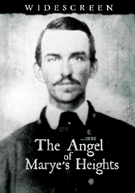
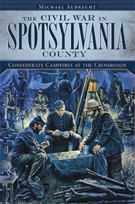
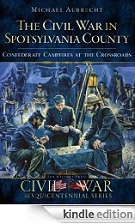

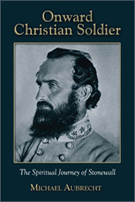

 I wanted to post a quick update on our friend and guest blogger Michael Kahn. Michael is the historian working tirelessly to have a monument erected commemorating the soldiers and officers of the First Rhode Island Regiment. Last week Michael received a generous donation from IBM and a bronze Good Citizenship Medal from his local chapter of the Sons of the American Revolution. Michael told me that the SAR also gave the award to another board trustee, Monica Doherity, for her contributions to this project. Monica is also the editor of the book “The Nasty Affair at Pines Bridge,” which is only available through the Yorktown Historical Society.
I wanted to post a quick update on our friend and guest blogger Michael Kahn. Michael is the historian working tirelessly to have a monument erected commemorating the soldiers and officers of the First Rhode Island Regiment. Last week Michael received a generous donation from IBM and a bronze Good Citizenship Medal from his local chapter of the Sons of the American Revolution. Michael told me that the SAR also gave the award to another board trustee, Monica Doherity, for her contributions to this project. Monica is also the editor of the book “The Nasty Affair at Pines Bridge,” which is only available through the Yorktown Historical Society.  Yesterday I received an email from a reader who wanted to know my thoughts on Thomas Jefferson’s religious beliefs. This topic has been a subject of interest to me and I have spent a great deal of time examining his writings on faith and religion. My next manuscript is titled Faith and Freedom in Fredericksburg: Thomas Jefferson and the Virginia Statute of Religious Freedom and will present Thomas Jefferson’s time at Fredericksburg in 1777, his meeting at Weedon’s Tavern in which he agreed to author the Virginia Statute of Religious Freedom, the story surrounding the writing of it, why Jefferson took so much pride in its completion, and how the results are commemorated to this day.
Yesterday I received an email from a reader who wanted to know my thoughts on Thomas Jefferson’s religious beliefs. This topic has been a subject of interest to me and I have spent a great deal of time examining his writings on faith and religion. My next manuscript is titled Faith and Freedom in Fredericksburg: Thomas Jefferson and the Virginia Statute of Religious Freedom and will present Thomas Jefferson’s time at Fredericksburg in 1777, his meeting at Weedon’s Tavern in which he agreed to author the Virginia Statute of Religious Freedom, the story surrounding the writing of it, why Jefferson took so much pride in its completion, and how the results are commemorated to this day. 